This dip salad is many people’s first encounter with Turkish food, alongside a basket of warm bread. But what’s in it? Here’s how to make a fresh and spicy Turkish ezme salad, the perfect appetiser for any meal.
If you’ve ever been to Turkey, chances are you’ve eaten acılı ezme. Perhaps it was even your first taste of Turkish cuisine.
This little salad is often served at restaurants alongside the basket of Turkish bread that appears virtually the second you sit down. Somewhere between a finely chopped salad and a dip, it’s surely made many wonder what it might be.
And, perhaps more importantly, how spicy this might be.
Spicy Turkish salad
People not familiar with Turkish cuisine seem to think it’s spicy, full of spices – or even both. This is far from the case. On the contrary, Turkish food is generally characterised by clean flavours and very little heat.
As with anything, there are exceptions.
Acılı is the Turkish word for spicy. This little bowl of finely chopped vegetables might look inconspicuous. But if prepared properly, acili ezme is a sort of Turkish chilli salsa. It certainly packs a punch!
Unsurprisingly, it’s strongly linked to Turkey’s Southern and Eastern regions. Here, they have a heavier hand with spices, particularly dried chili flakes.
And as for ezme? It’s the Turkish word for crushed, referring to the style of preparation. Indeed, you’ll find several other ezme dishes in Turkish cuisine, all of them being crushed, dip-like in texture.
Where does the heat in acili ezme come from?
The heat in ezme salad usually comes from one of two sources.
My preferred way is using the dried chili flakes known as pul biber, also known as Aleppo pepper. These are usually fairly mild and very fragrant, almost like paprika flakes. That said, if you head to the spice market, there’s a huge variety of pul biber available, from the very mild to the super spicy.
If you’ve got access to it, use a fairly spicy version when making this salad. Or you can, as I’ve suggested in the ezme recipe below, use a combination of fresh chilies and a regular heat pul biber.
Another option, more common in the Southeast, is using Turkish hot pepper paste. You’ll find it in my international grocers, labelled with its Turkish name acı biber salçası. Using this adds a beautiful umami laden heat.
Personally, I prefer the cleaner and fresher flavour of the fresh vegetables and pul biber.
How to make ezme salad
As with all salads based on fresh vegetables, Turkish ezme salad is best freshly chopped, using vegetables in season. As such, this salad is best served during the summer months or early autumn, when tomatoes are full of flavour.
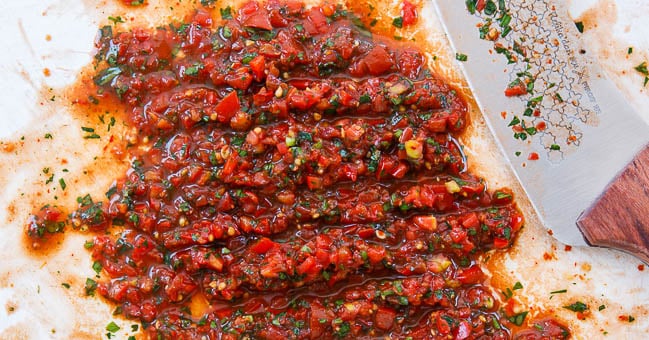
Of the ingredients, the most important is to make sure that your tomatoes are red, sun ripened and full of flavour. At the peak of summer, you can use any tomato for this salad. Smaller cherry or plum tomatoes are a safer choice in the weeks before and after.
If your tomatoes aren’t quite at peak flavour yet, or you just would like an extra umami punch, you can add 1-2 tsp best quality tomato paste to the salad. Again, I personally prefer the cleaner and fresher flavours of the fresh vegetables here, but sometimes your tomatoes will need a little bit of help.
As mentioned above, unless you can get hold of a very spicy pul biber, I recommend using both fresh and dried chillies in this recipe. As always with chilies, whether fresh or dry, keep in mind that they can vary significantly in heat! Adapt the amounts to the ingredients you have at hand and your own tastebuds.
Another thing to note: There isn’t a definite recipe for ezme salad. Each cook has his or her own preferences, and it can easily be varied according to what you’ve got at hand or feel like on that particular day.
My version is fresh and simple, others like to add a greater variation of vegetables or spices. Consider the recipe below a delicious starting point rather than a blueprint to be followed to a tee.
How to serve Turkish ezme salad
In Turkey, you’ll find ezme primarily in kebab restaurants. Here, it’s usually served as an appetiser alongside fresh bread or as a side dish to kebabs. Many other restaurants, particularly those geared towards tourists, have also taken to serving a small bowl of acili ezme as guests sit down at the table.
The salad can also be served as a meze. It also works well along any grilled meat (not just kebabs).
Whichever way you serve it, make sure there’s plenty of delicious fresh bread, such as Turkish pide bread, alongside to mop up all those delicious juices.
I always recommend making chopped vegetable salads just before serving. Once chopped, fresh vegetables quickly lose their crispness. Since ezme is so finely chopped as to nearly resemble a dip, it can be made a few hours ahead in a pinch. But the best restaurants always chop it to order for a reason.
The recipe serves 2-3.
Try these Turkish classics as well:
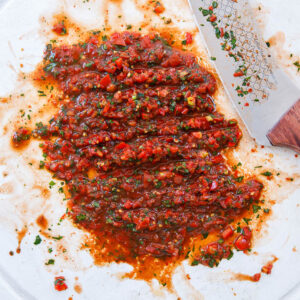
Turkish ezme salad
Ingredients
- 1 medium onion, halved and sliced thinly
- 200 g cherry tomatoes, or other tomatoes in season, finely chopped
- 1 romano pepper (red), deseeded and finely chopped
- 1 medium hot chili pepper (red), finely chopped
- 2 Tbsp finely chopped flat-leaf parsley
- 1 Tbsp lemon juice
- 1 Tbsp pomegranate molasses
- 2 tsp pul biber (Aleppo pepper), or to taste
- salt and pepper
How I make it
- Rub the onion with a little salt and leave it for a few minutes. This helps soften some of the sharp flavour of raw onion.
- Finely chop all the vegetables and flat-leaf parsley, first separately and then together. Continue chopping until you’ve got a mixture which is somewhere in between a salad and a dip.
- Transfer to a bowl and season to taste with lemon juice, pomegranate molasses, pul biber, salt and pepper. Serve immediately.


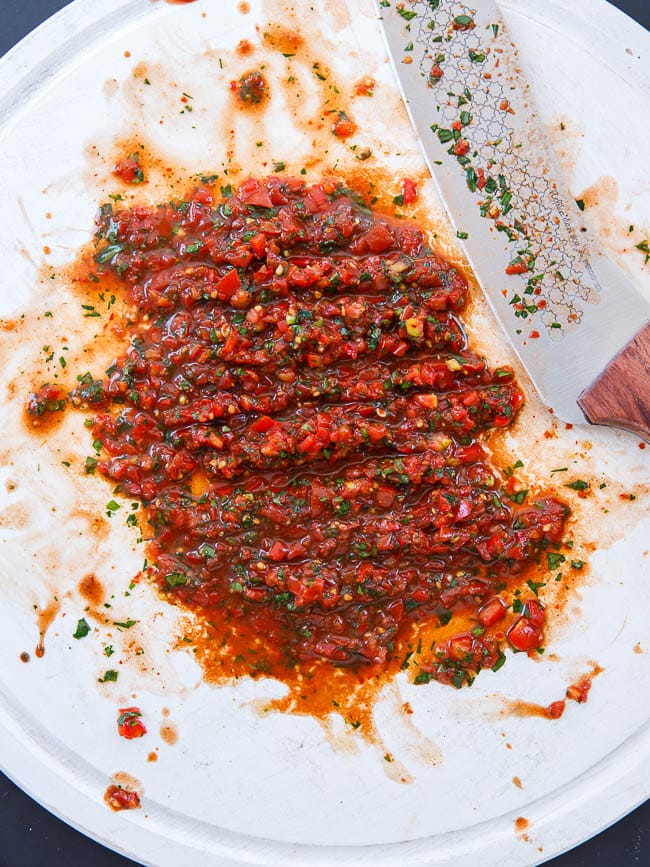
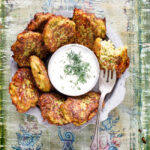
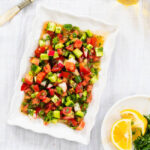


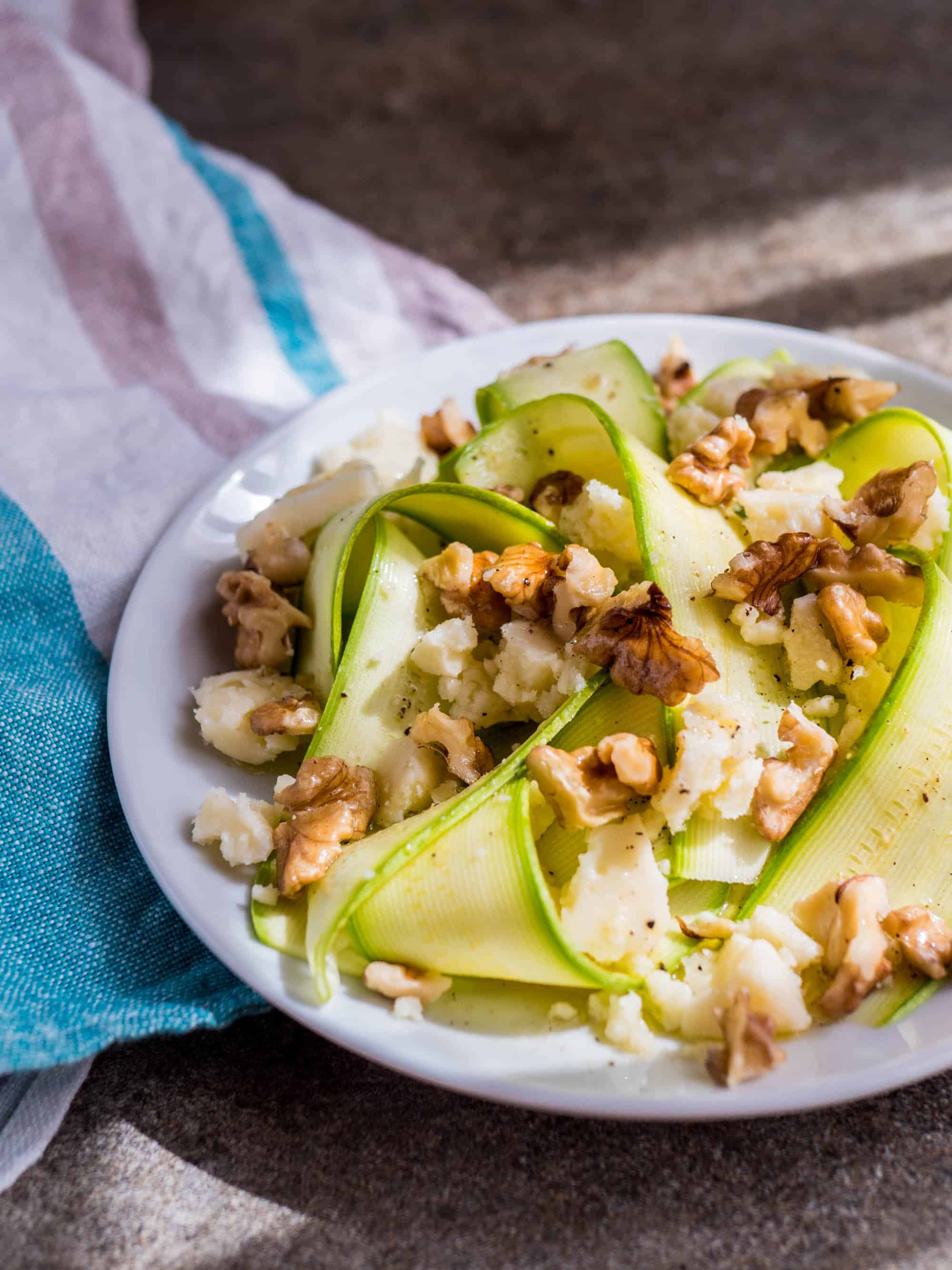
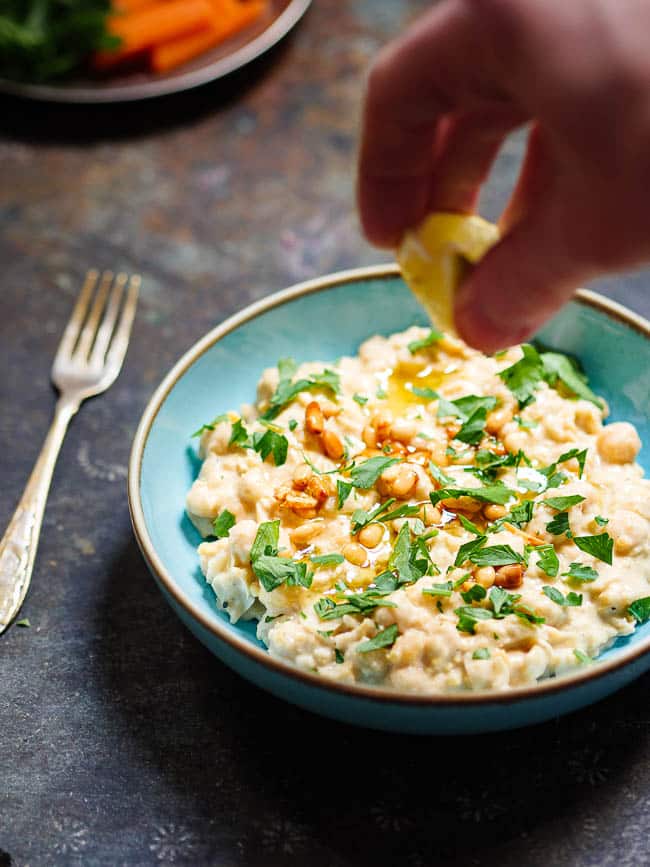
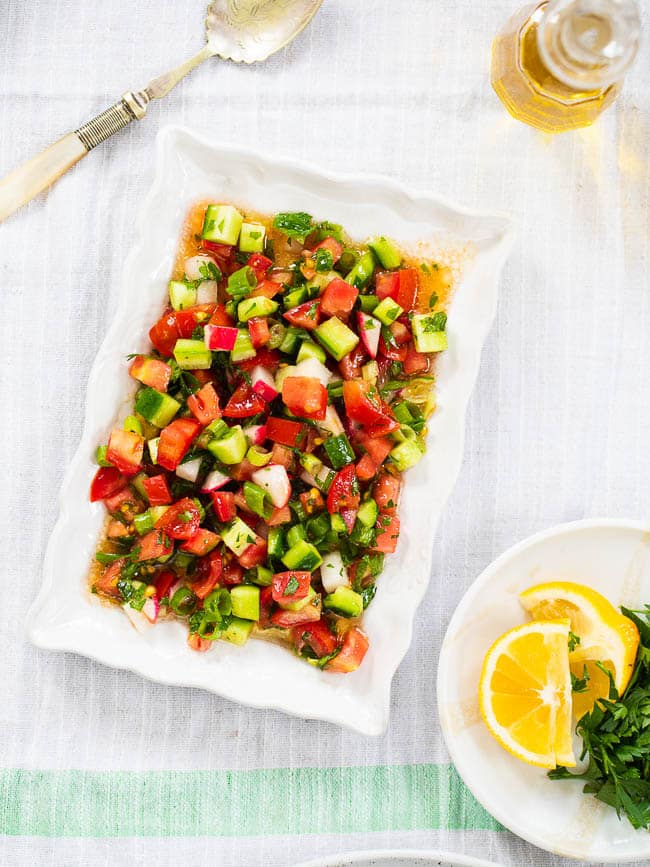
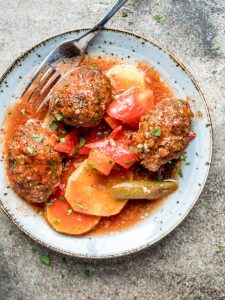

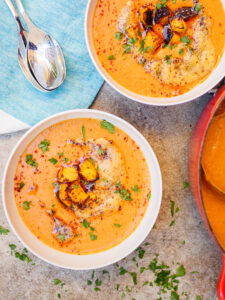




8 responses
Having just returned fro holiday in Turkey and had sampled this dish there, so I tried to replicate it with this recipe. It was a great success, even better than we had in the restaurants. I did add some very finely chopped mint leaves, which worked a treat. Thank you.
Great recipe, very simple and tastes just like the ezme we enjoyed in many a restaurant in Turkiye.
I make Esme’ salad with the long thin mild pale green peppers. We bought them when in Cyprus and also from a Turkish supermarket in Hounslow, West London. Wish we could by them local to us. Love this salad! Delicious on nachos on top of melting cheese!
Hello. I remember tasting a ball of mixed spices in a ball. I think it was pit under the ground to mature. You had to wash it to remove some of the dirt but when you cut it open the colours were amazing. It was really smelly but delicious to eat with a bit of olive oil and bread. I used to get it from a friend unfortunately we list contact. Do you know what it’s called and can I buy it or make it myself? Thank you
Afraid I’m not aware of what this might be.
I think what you’re referring to is Calle zaatar it’s eaten with bread and olive oil in the Middle East it’s a mixture of thyme, sesame seeds and sumac citrus berries.
Just re-reading this and wonder if it might be sürk cheese? A very dry cheese with lots of spices making it orange and speckled throughout.
Shankglish? It’s a fermented yogurt ball mixed with herbs, it’s harden into a ball, then broken and served with chopped onions, parsely, tomatoes, olive oil, lemon on top of pita, lavash, or pide.